How to play pickleball: Playing Tips, Standards, Strikes & Faults
Pickleball is a modern-day game that has gained fame in a very short time. Pickleball is popular among all groups of ages like kids, adults, and old people. Pickleball is a blend of table tennis, badminton, and many other games. Two grandpas first created Pickleball for their children as an indoor game in the United States in 1965. It was officially introduced in 2022. Although it resembles other games like table tennis and ping pong etc it still has some different rules which distinguish it from other games. It comes with separate paddles balls and court dimensions
To be good at pickleball, you need to practice different skills like hitting soft shots near the net (called dinking), hitting the ball hard (attacking), and moving quickly on the court. You also need to learn how to serve and return the ball properly and use good strategies to win.
You can play pickleball at any time, as long as you have a court and enough light. Most adults play for about 2.5 hours each week to stay healthy.
In pickleball, you need to know things like how the court is set up, how to score points, and what you can and can’t do during the game. You must also hold the paddle the right way and avoid common mistakes.
Overall, pickleball is a fun game that anyone can enjoy, but it takes practice to get good at it.
How to play pickleball?
To play pickleball you need to learn some basic rules that Include diagonally serve, the court size, the net height, volley and non volley zones, double bounce rule the faults and much more.
There are two types of games
- Single play pickleball
- Double play pickleball
In single play, there are only two players standing opposite to each other as opponents
While in double play there are two player are standing on each side as a team members
What are the skills that need to be developed in playing pickleball?
Here are the following skills one must polish to become a pro at the game, including how to play pickleball.
- Dinking and dink volley :Dink volley is one of the main skills you want to become a good player of pickleball. Dinking in pickleball is related to soft and short shots which are volleys near the net with underhand motion. It is a strategic way of playing pickleball to get an opportunity. A dink volley refers to volleying the ball softly over the net by maintaining ball control. This strategy is used to get opportunities and pace of the game.
- Attacking: Attacking refers to aggressive shots. In this skill, the ball is hit forcefully and powerfully, ultimately putting pressure on opponents and making it hard to return the ball. Attacking can be done by overhead smashes, hard volleys, and from the baseline with strong groundstrokes. However, it is crucial to stay on the game’s rules.
- Resetting and blocking: Resetting means regaining control of the point in pickleball by striking the ball with speed and deep shot, making the opponent move fast and reset his position. Blocking is a smooth and controlled ball played near the net
- Baseline skills: Baseline skills are the fundamental skills a player must learn to play pickleball well. These skills include
- Ground strokes: In this skill, players can play controlled and accurate forehand and backhand groundstroke.
- Volley skills: Volley skills involve the awareness of the non-volley zone mainly known as the kitchen and the ability to make a volley effectively and the soft volley as well which includes soft and controlled volleys near the net.
- Dinking: Dinking involves hitting softballs near the net to make it difficult to attack the opponent.
- Footwork: It includes lateral movements, and the ability to move laterally along the baseline. These movements
- Serve and return: Serve and return include underhand serve which is the basic part to start a rally and return of serve is the skill to return serve with accuracy. And setting the points for upcoming games.
- Strategic shot selection: Strategic shot selection includes the awareness of the court, the opponent’s position, etc. to make precise shots.
- Game strategy: How to hit a precise shot within the open areas with no errors and work with patience without making impulsive shots are the game strategy for a well-played game.
- Transition zone: The transition zone is also a major part of the game. the area between the non-volley zone and the baseline is known as a transition zone of the court of pickleball. but the majority of shots are being played in the NVZ or baseline of the pickleball.
- Serving: Serving is an essential aspect of the game. It must be made underhand below the waist and the ball should touch the paddle from below the server wrist. Here are the types of servings.
- The power serve: In this skill, the ball is hit with pace and depth making it hard for the opponent to return the ball. Make a power serve with the focus and contact[i9 the ball slightly above its center for optimal power control.
- The placement serve: In this skill players mainly focus on accuracy over pace. But hitting in the different areas of the court can help you find the weaknesses and flaws of the opponent by engaging him in difficult positions of the game
- The spin serve: The spin adds an extra layer to the game and makes the ball bounce more. And makes it challenging for the opponent to attack back.
- The drop serve: The drop serve includes the soft hit of the ball over the net. Causing the drop quickly and bounce low.
- Returning: Mastering the skill of returning helps you gain control and advantage over your opponent. returning is the same as serving. It includes
- The deep crosscourt return: It is the most common return of the pickleball game. in this hit you make your opponent move laterally and cover more ground. Giving more offensive opportunities.
- The block return: This skill is a defensive technique that is used to neutralize fast-paced shots. In this technique, you have to focus on time and position with accuracy. And aim is to place the ball deep.
- The lob return: The Lob return is a strategic hit used to reset the scores and regain the rally. This hit lands near the baseline.
How can I improve my skills?
Here are the pro tips to improve your pickleball sport.
- Know the rules: If you want to get better at pickleball, start by learning the rules. Even though pickleball seems easy, there are lots of rules that can change how the game goes. For example, you can only score points when you serve the ball. And the ball has to bounce before you hit it. Knowing these rules and others will help you make smarter decisions on the court and predict what your opponent might do. This will help you improve your game
- Get to the kitchen: When you’re playing pickleball, it’s super important to hang out near the kitchen line. The kitchen is the no-hit zone that stretches seven feet from the net on both sides. Being there puts pressure on your opponents and lets you hit better shots. That’s why you should hustle to the kitchen as fast and safely as you can.
- After you make a good dink, move up to the kitchen! Pause when your opponent is about to hit the ball, but don’t rush back to hit it after it bounces. If you’re aiming for a winning shot, remember that the best shots are volleys and come from the kitchen.
- Keep your opponents back: Staying at the kitchen line can really mess up your opponents. They have to cover more ground on the court and hit tough shots from the kitchen to get back in the game.
- Plus, if you aim low and make them bend down to hit the ball, it’s really hard for them to return it. They might mess up and make a mistake.
- Always be in a ready position: To step up your pickleball skills, stay ready at all times. This means bending your knees a bit, keeping your feet apart, and putting your weight on your heels, not your toes. Keep your upper body loose and your arms and paddle in front of you, pointing slightly upwards.
- After every shot, get back into this ready stance so you’re all set for whatever your opponent throws at you.
- Practice your third shot drop: Mastering the “third shot drop” is crucial as it reduces your opponent’s chance to hit aggressive shots, allowing you to advance to the kitchen line. Practice this shot regularly, as it requires refinement over time. Once you nail it, you’ll see a significant enhancement in your gameplay.
- Know your position: Pickleball can switch from offense to defense in a blink. It’s easy to fall into the trap of attacking when you should be defending, or playing it safe when you could be pressing your advantage. Knowing who’s in control and adjusting your game accordingly is key to winning and getting better.
- Be strategic: It’s smart to realize that you can set up winning shots based on what happened before. During a point, players move around, leaving big open areas on the court. If you aim for these spots, your opponents have to stretch to reach the ball, making them more likely to mess up.
Here is the detailed video to improve your skills.
What is a Pickleball shot?
Down is the list of basic shots to learn in pickleball.
- The serve: Points are started by the serve. It is not included in volley or groundstroke.
- The lob: The lob shot in pickleball is famous for a reason. It’s when you hit the ball high up into the air, over your opponents’ heads. They have to scramble to the back of the court to reach it. This sudden change can make them panic, and they’re more likely to mess up. People use this shot mainly to change the pace of the game. If your opponent keeps hitting hard shots at you, and you can’t seem to slow things down, the lob can help. Sending the ball high to the back of the court makes your opponent run back, giving you a chance to move up and take control of the net. But be careful not to use it too much. If you lob too short, your opponent can smash it back at you. And if you lob too far, it might go out of bounds. So, use it wisely.
- Cross-court dink: A cross-court dink is when you softly hit the ball from one side of the court to the other side of your opponent’s court. It’s a really good shot in pickleball, but it’s also really hard to do perfectly. You have to understand how far you need to hit the ball. A dink straight ahead of you doesn’t need as much power as one that goes all the way across the court. So, you have to hit it a bit harder for it to reach.
- The drive: A drive is when you hit the ball really hard, either as a groundstroke or a volley. It’s all about power and speed, aiming to make the ball go really fast and hard to return. Its a great move if you’ve got strong upper body muscles, but it’s tough for people who aren’t very strong. Drives shouldn’t be used all the time, though. They’re more like a special move. If you notice an opening in the court or your opponent running towards you, that’s when you should go for a drive. It can be a really effective move in those situations.
- Block shot: In pickleball, the block shot is like a shield against hard hits from your opponent, especially when they’re driving the ball aggressively. It’s there to help you handle those tough shots. Blocking also slows down the game, giving you a chance to catch your breath and stay in control. It’s a good way to keep things steady and stop your opponent from getting too ahead.
- Deep return serve: Learning this shot well is super important. It’s not really hard, but it does take time to get good at it. It can be tough to judge how far you’re hitting the ball into the backcourt. Our eyes play tricks on us when it comes to judging far distances. The best way to get better is to practice with a friend or someone who plays pickleball. They can give you feedback on how far your shots are going, which helps you improve. Over time, you’ll start to get the hang of it and it’ll become easier.
- Backhand punch: The backhand punch is a neat trick that often surprises your opponent. It’s a shot you make at the net where you basically punch at the ball with your paddle. This move turns a high dink from your opponent into a shot that goes straight back at them. Its really easy to do. Just hold your paddle like you would for a backhand shot, and then swing it like you’re punching with your fist. It’s as simple as that!
- Overhead smash: The overhead smash is for one thing only: to hit the ball so hard that your opponents can’t return it. It’s a big opportunity. When your opponent hits the ball high over your head, that’s your chance to strike back hard! Swing your paddle down and hit the ball with force. The most important thing is to aim well. If you keep hitting into the net, don’t swing your wrist too much. But if your shots keep going out past your opponent, try using more wrist action or switch to a lighter paddle.
- Third shot drop: Mastering the third shot drop is super important in pickleball. It’s a must-know for advanced players. Many points are lost because of it. Players feel a ton of pressure when they have to make this shot. Their opponents are already at the kitchen with a big advantage, while they’re still at the back or near it. Third shot drops are gentle shots that go up and then land softly in the kitchen. This soft landing makes your opponent have to dink the ball instead of hitting it hard. But if you hit your shot too far or too high, your opponent can smash or hit it hard, making you likely to lose the point.
- The dink fake: This move is super sneaky in pickleball. The dink fake can be tricky, but if you do it right, it’s tough for your opponents. Here’s how it goes: You act like you’re going to hit a soft shot, but instead, you hit it hard and fast. It surprises everyone. You can also use it for a powerful shot if the return is short. The trick is to make it seem unexpected and catch your opponents off guard. It works even better if you aim it straight at them.
- Backspin return serve: This shot works really well if you do it right, and it’s pretty funny when it happens perfectly. To do it, wait for a serve that’s not too high. Then, use your paddle to hit the ball downward. This makes it float softly in the air but with a lot of spin on the sides. When it bounces, it goes sideways, and is really hard for your opponent to hit back. If you get it just right, the ball will bounce near the kitchen on either side, making it tough for your opponent. Ouch!
- Around the post-shot: This shot is really cool because you don’t see it often. It happens when your opponent hits a strong shot or dink that goes way out of your side of the court. To make this shot work, you have to run fast to keep up with the ball’s speed. If the ball bounces far enough out along the sideline, you can hit it around the post. But remember, if the ball hits the side post, it’s a mistake, even if it lands in your opponent’s court!
- Backhand spin dink: Once you’re comfortable with your dinking skills, you might want to elevate your game with a special move. This particular shot shines when executed as a cross-court dink with your backhand. For right-handers, this means positioning yourself on the left side of the court, and vice versa for lefties. It’s a thrilling shot to pull off if you have the confidence. The key is to slice underneath the ball, adding a touch of backspin. While your opponent may anticipate it, mistakes can still occur. What makes this shot tricky is its deceptive nature; while dinks are typically soft, the added backspin adds an element of unpredictability.
- However, be cautious not to hit it too high, especially against taller opponents with expansive reaches. Stick with a regular cross-court dink if you’re facing such opponents.
What is the proper time for the game?
The proper time for the game varies according to your schedule, and the availability of the court. Pickleball can be played any time of the day it depends totally on you. But make sure the court is well-lit and visibility is good.
What are the types of pickleball courts?
The standard look of a pickleball court: A regular pickleball court has a net that divides it in half. The net stretches across the entire 20-foot width and separates the 44-foot length into two equal 22-foot halves. The net is 36 inches tall at the poles and deep to 34 inches in the middle. All lines on the court should be 2 inches wide and are considered part of the court’s total size., the lines are usually white, which stands out against the dark green of most court surfaces.
Divisions of pickleball courts
- Baseline: This is the back line of each half of the court, running parallel to the net. It marks the ends of the court’s 44-foot length and where the ball is served from. The serving player can’t step over this line during their serve.
- Sidelines: These lines run perpendicular to the net and mark the boundaries of the court’s 20-foot width. They’re on both sides of the court.
- Centerline: Running perpendicular to the net, this line goes from the baseline to the non-volley line, dividing the court into odd and even courts.
- Non-Volley Line: Parallel to the net, this line is 7 feet from the net on both sides of the court. It marks the outer boundary of the kitchen or non-volley zone closest to the baseline.
What is the best floor for pickleball?
Asphalt and concrete slab is known as the best type of floor for pickleball courts. The floor needs to be smooth or flat if it is made of slab or asphalt. With a light broom finish.
How does scoring work in pickleball?
Two main types of scoring systems work in pickleball.
- Single scoring: In singles pickleball, scoring is quite similar to doubles, but there’s no second server involved. When the server’s score is even, they serve from the right side, and when it’s odd, they serve from the left. The serving position is determined by the server’s score, not the receiver’s. The receiver lines up on either the right or left side based on the server’s score. The score is announced as “server score, receiver score.
- Double scoring: In pickleball, points can only be scored during the serve; the receiving side can’t score. At the game’s start, the player on the right serves to the opposite court. After a point, the server moves to the left and serves to the opposite court. Servers switch sides each time a point is scored, but receivers stay put. The first server continues until they lose a rally, then the second server takes over. The score is called out as three numbers: server score, receiver score, and for doubles, the server number. The server number changes each service turn. At the game’s beginning, the score is called “0-0-2” to indicate the second server. Players should be on the right when their team’s score is even and on the left when it’s odd. If not, there may be a mistake in positioning or score calling.
How many points do you need to win a pickleball set?
Pickleball is played to 11 points and the player needs to win by 2 points.
What are the pickleball rules?
Some basic rules are listed below.
- The size of the court must be 20 feet wide and 44 feet long with a net of 36 inches high at the sidelines and 34 inches high at the center
- Paddles must be made of solid material and a perforated ball as a wiffle ball
- The player must hit the ball diagonally cross-court to their opponent to start the game.
- The serving team scores the points
- Double bounce rule, each team must let the ball bounce before a volley
- Players are not allowed to volley the ball from the kitchen, non-volley zone
- When a player violates the rule he makes faults like volleying the ball from a non-volley zone
What are the pickleball playing positions?
There is no strict rule for positioning yourself but you may take some common positions that players may take while playing the game.
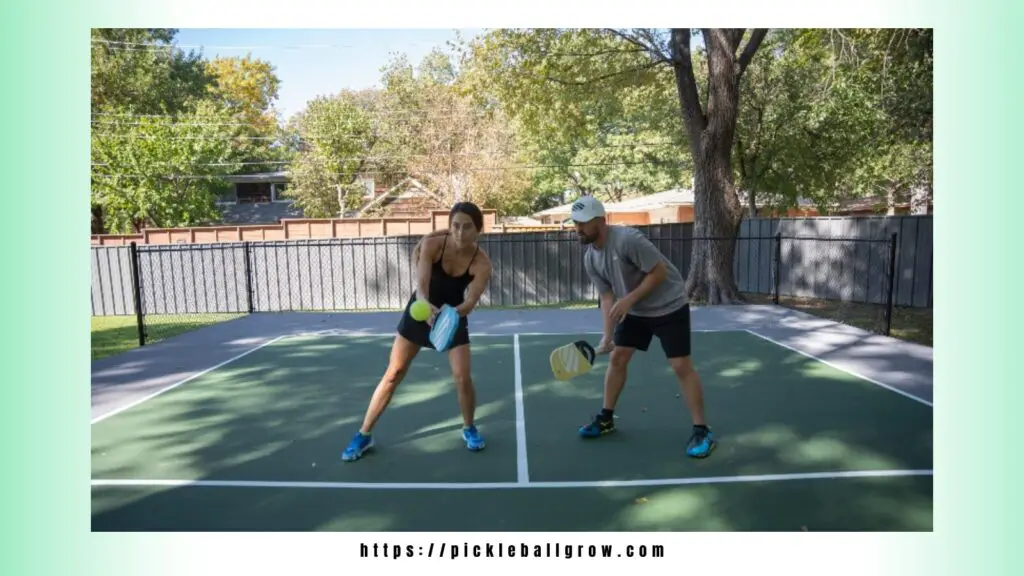
- Server and receiver: The position of players is directly related to serving and receiving. The starting serve starts from the right side of the court. Who serves and receives the ball for each serve is decided by the score and where players are positioned at the game’s start.
- Singles: If the server’s score is an even number (0, 2, 4, etc.), they serve from the right side and their opponent receives on the right side. When the server’s score is odd (1, 3, 5, etc.), they serve from the left side and their opponent receives on the left side. A side-out occurs when the server loses the rally or commits a fault, resulting in the serve going to its opponent.
- Doubles: In pickleball, each game begins with Server 2 serving from the right side of the court. The serving position changes depending on the team’s score; if the score is even, the server starts from the right, and if it’s odd, it starts from the left. After the first serve, servers alternate between Server 1 and Server 2, with Server 1 serving first in each game. After each point is won, the serving side switches, but the serving position continues to alternate between right and left. This rotation of servers and sides continues until a fault is committed or the rally is lost.
Where to stand while playing?
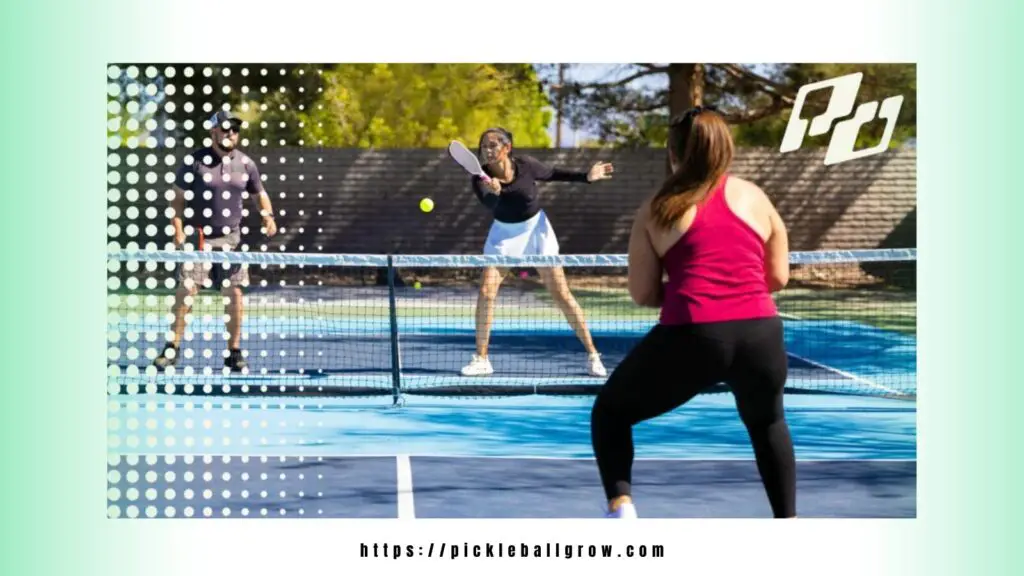
According to USAPA players must stand behind the baseline within their position. Players can move around freely during the rally. Players are not allowed to volley the ball in “the kitchen”
What are the Professional pickleball games?
Here I’m providing the list of leading pickleball games
- Professional Pickleball Association (PPA): PPA is one of the leading organizations promoting pickleball tournaments across the United States.
- USA Pickleball Association (USAPA): USA Pickleball Association is dedicated to promoting pickleball at all levels and organizes tournaments featuring top players
- International Federation of Pickleball: The International Federation of Pickleball promotes the games all across the world it features the following tournaments
- US Open pickleball championship
- The tournament of champions
- Pickleball nationals
What are the pickleball Playing Strategies?
These are the best tactics for singles and doubles pickleball with this straightforward comparison table.
| Single Play Strategies | Doubles Play Strategies |
| In singles pickleball, serve strong and aim deep, but stay in bounds. Mix up your serves and stand in the middle for returns. Hit deep and target corners. Stay back defensively and exploit weak sides. Use fast shots to move forward. Always face your opponent. Save lobs for close net situations. Choose passing shots, drops, or lobs wisely. These strategies improve your singles pickleball game. | In doubles pickleball, start behind the baseline when serving. The receiver begins near the baseline but can move forward. After serving, both sides aim for the non-volley zone (NVZ) line. Get there quickly for the next shot. Stop and be ready if caught mid-court. Stay at the NVZ except for handling lobs. Partners need to move well to cover the court effectively. |
What are the pickleball tips?
Pickleball playing tips are listed here.
- Communicate your partner efficiently while playing
- Your aim should be behind your opponent.
- Be in a ready position every time.
- Keep practicing your drop shots
- Takeover the kitchen
- Your shot selection should be simple
- Hit the serve deeply
- Have a good footwork
- Keep in the kitchen line
- Move effectively in the court with your partner
- Be humble
- Must have quality gears
What equipment is required for pickleball?
To play pickleball you require the following pickleball gears
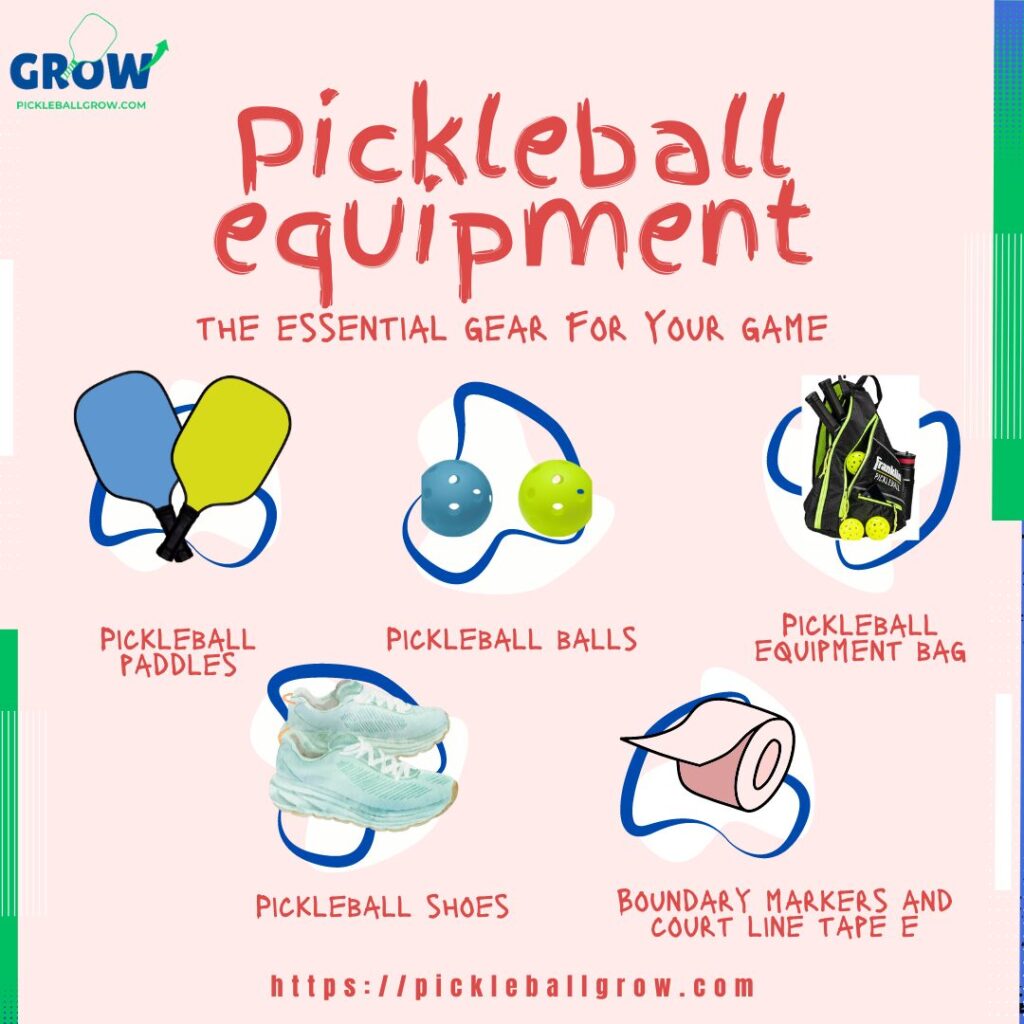
What are the Pickleball paddle grip methods?
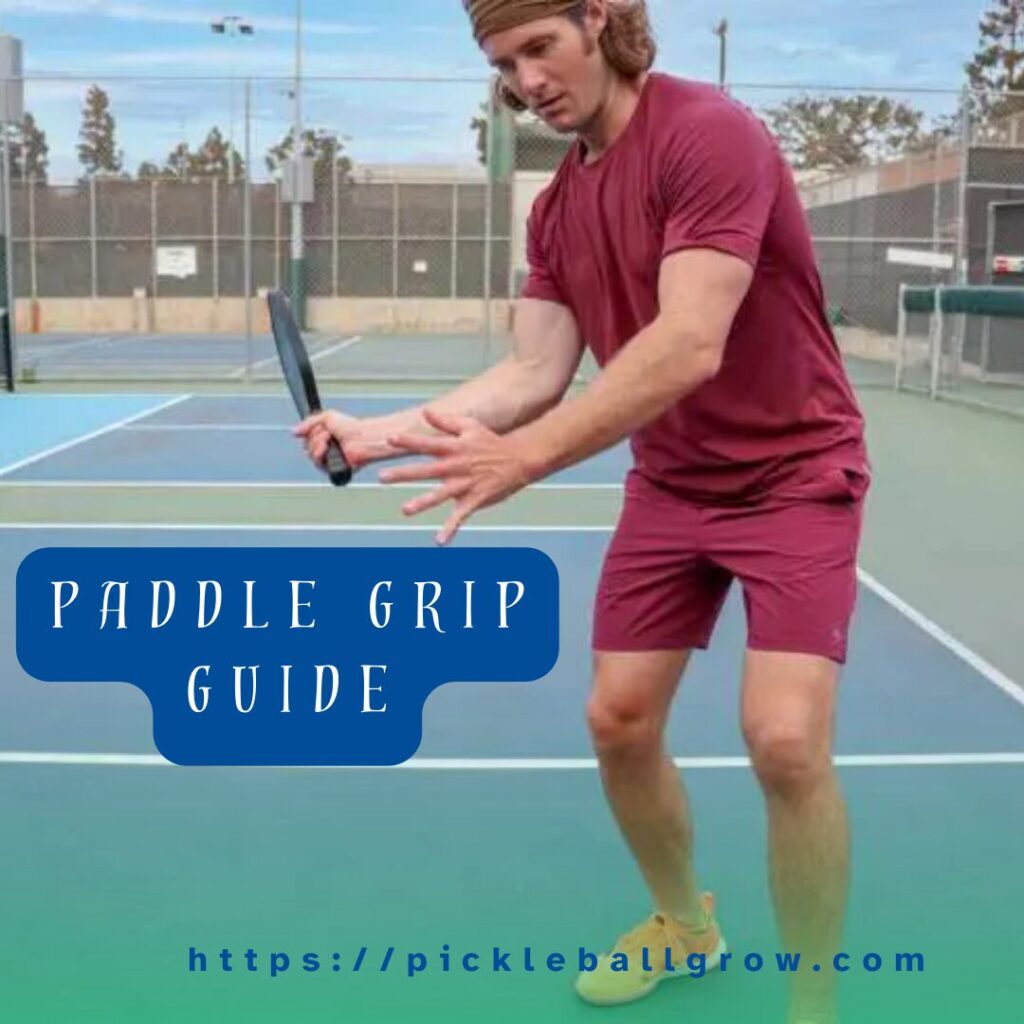
There are the following pickleball grips
- Eastern pickleball grip: This is considered the best type of grip for beginners. This is a universal, basic, and neutral grip for the average player player. It is used for forehand and backhand hits. For an eastern pickleball grip hold your paddle in front of you with your other hand. Make sure the paddle’s face points a little to the left and place it on the paddle.
- Western pickleball grip: To use a Western pickleball grip start with an Eastern pickleball and to get an accurate position move your hand to 90 degrees clockwise for right-hand and 90 degrees counterclockwise for lefties. Using a Western pickleball grip position your palm behind the paddle during forehand shots, resulting in powerful hits. However, your palm ends up in front of the paddle on backhand shots, leading to weaker shots. This often prompts players with a Western grip to unintentionally hit a backward forehand shot on their backhand side. If you encounter a player with a Western grip, aim for their backhand side, as it’s typically weaker.
- Continental pickleball grip: It is also known as hammer grip. It is so because in this grip you handle paddles the same as hammer.in order to use this grip turn your hand, while holding like western to counterclockwise for the right-handers. It will be V-shaped between your thumb and index finger toward your other side. It is effective for delicate drinks and backyard shots.
What are the Mistakes to avoid while playing pickleball?
The following are the most common mistakes to avoid during pickleball.
- Don’t hit the ball too hard.
- Don’t stand too close to your partner or too far maintain an accurate distance.
- Not maintaining good communication is fetal.
- Not playing with strategy
- Quick shots
- Ignoring of shots
- Lack of adaptability
- Lack of patience
What are the popular pickleball places to play?
Here is the list of most suitable places to play pickleball.
- Pickleball courts a community center
- Public parks
- Private parks
- Private clubs and recreation centers
- Active adult communities
- Schools and universities
What are the common Pickleball Injuries?
Here is the list of 5 most common pickleball Injuries
- An ankle sprain is the most common injury in pickleball
- Again and again, swinging motion causes pickleball elbow
- High jumping and moving in the court may cause Achilles Tendonitis
- Rotator cuff injury
- And wrist fracture
FAQS
What skills are needed to play pickleball?
Skills include dinking, attacking, resetting, baseline skills, footwork, serving, return, strategic shot selection, and game strategy.
How can I improve my skills?
Tips include knowing the rules, mastering the third shot drop, practicing consistently, and being strategic in shot selection.
What are the basic pickleball shots to learn?
Shots include the serve, lob, cross-court dink, drive, block shot, deep return serve, backhand punch, overhead smash, third shot drop, dink fake, backspin return serve, and around the post-shot.
What is the proper timing for playing pickleball?
Pickleball can be played at any time of day, but well-lit courts with good visibility are ideal.
How long should I play pickleball?
It’s recommended for adults to play about 2.5 hours per week, according to health guidelines.
What are the types of pickleball courts?
Courts have specific dimensions, including baselines, sidelines, centerlines, and non-volley lines.
What is the best floor for pickleball courts?
Asphalt or concrete slabs are considered the best, with smooth finishes for optimal play.
How does scoring work in pickleball?
Scoring varies between singles and doubles matches, with points only scored during serves.
What are the basic rules of pickleball?
Rules include the two-bounce rule, player positioning, and the serving and receiving order.
What equipment is required for pickleball?
Equipment includes paddles, balls, shoes, bags, and boundary markers.
What is the approved pickleball equipment?
Approved equipment meets standards set by governing bodies like the USAPA.
What are the common pickleball grip methods?
Grip methods include Eastern, Western, and Continental grips, each suited for different shot types.
What are the mistakes to avoid while playing pickleball?
Common mistakes include hitting too hard, standing incorrectly, lack of communication, and impulsive shots.
Where are popular places to play pickleball?
Popular venues include community centers, public parks, private clubs, and schools/universities.
What are common pickleball injuries?
Injuries may include ankle sprains, pickleball elbow, Achilles Tendonitis, rotator cuff injuries, and wrist fractures.
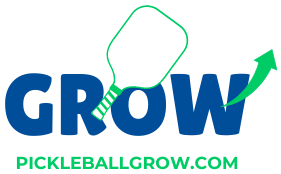
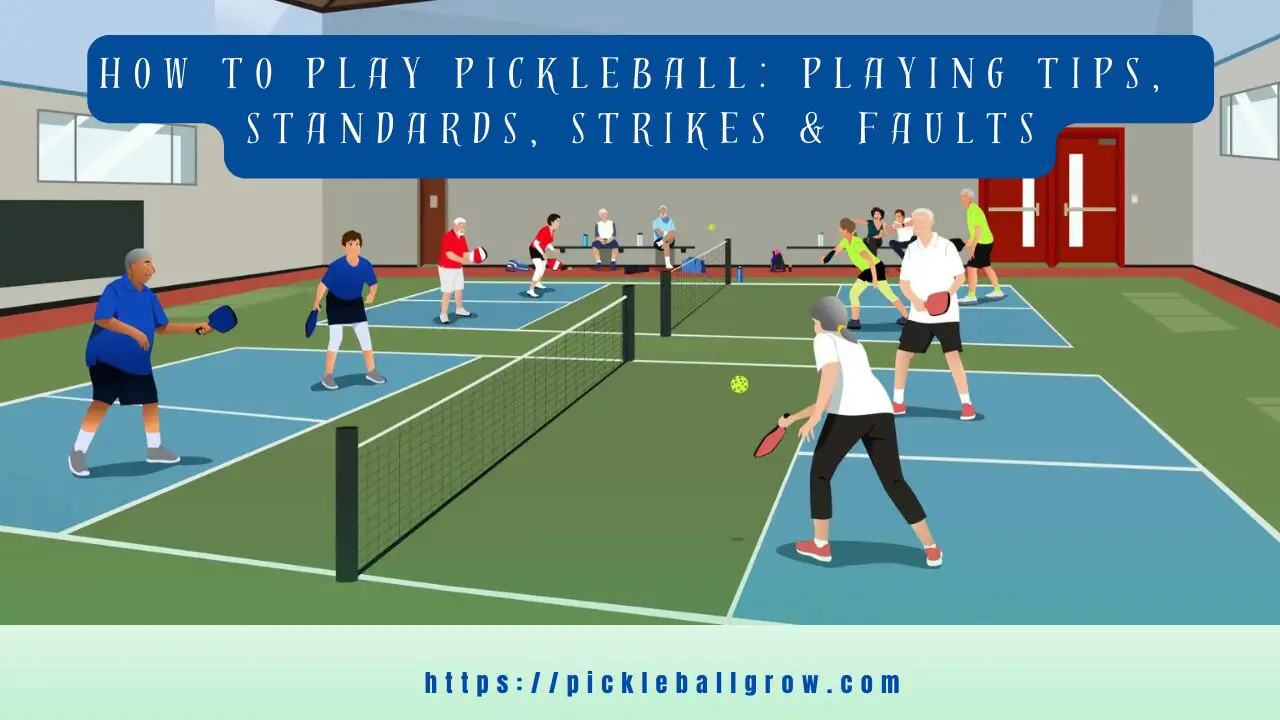
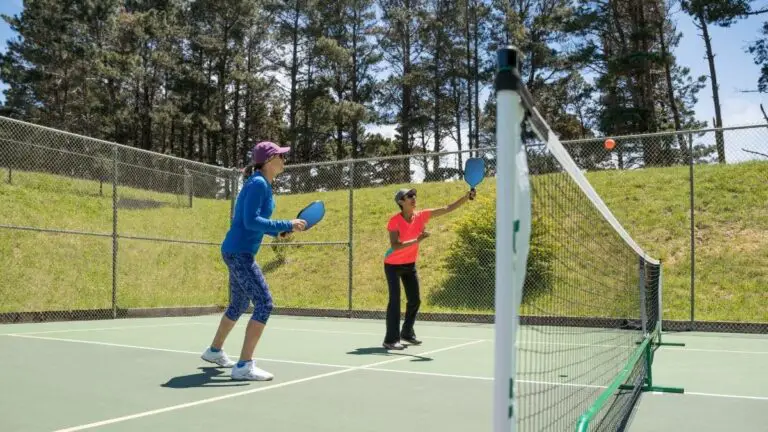
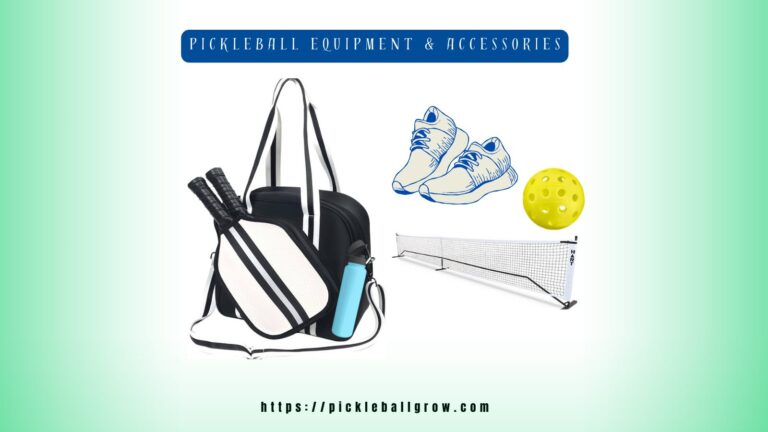
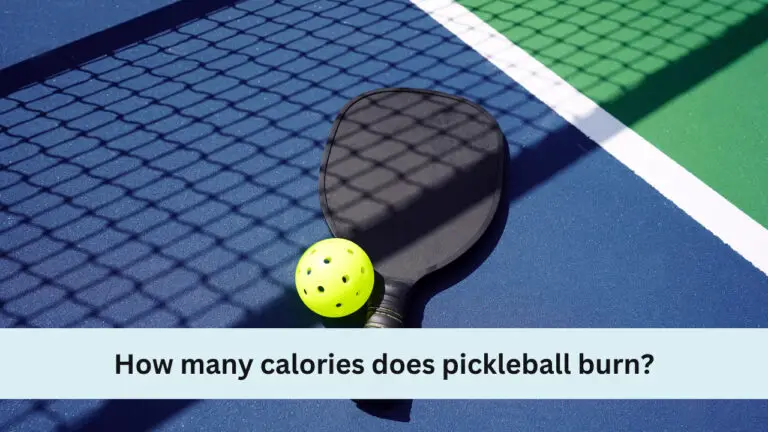
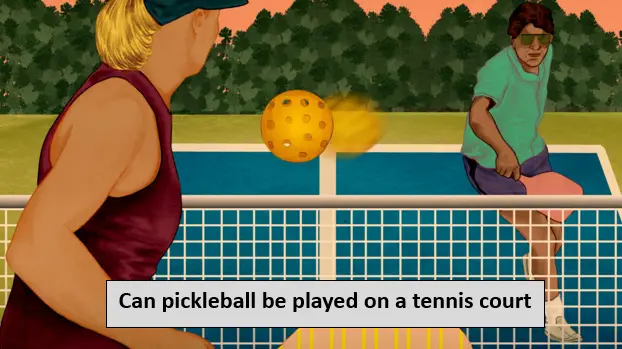


2 Comments